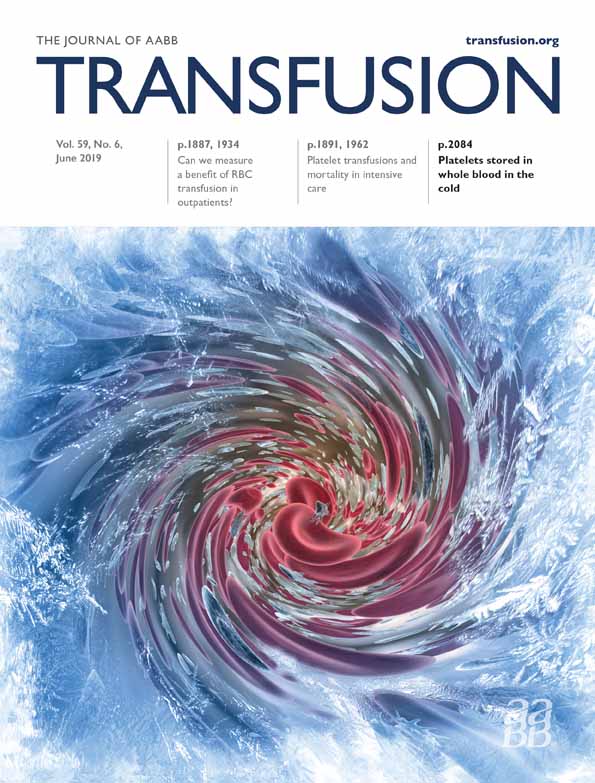Fatal acute hemolytic transfusion reaction due to anti-B from a platelet apheresis unit stored in platelet additive solution
Abstract
BACKGROUND
Hemolytic transfusion reactions from out-of-group plasma in platelet (PLT) transfusions are uncommon, with most involving passive transfer of anti-A. Only rare reactions have ever been reported due to anti-B.
STUDY DESIGN AND METHODS
An apheresis PLT product was donated by a blood group O male, processed using PLT additive solution, and pathogen reduced. Postreaction recipient testing included an antibody screen using gel technology, a direct antiglobulin test (DAT) using immunoglobulin G and C3, and an eluate against group O and B cells. Postreaction donor testing included measuring anti-B titers in saline, with and without anti-human globulin.
RESULTS
A 60-year-old blood group B patient with relapsed acute myeloid leukemia developed confusion, fever, and hypotension within hours after a blood group O PLT transfusion. The posttransfusion reaction evaluation was remarkable for a positive DAT 3+ for C3; the eluate showed anti-B. Rapid extravascular hemolysis occurred, with a 50% decline in hemoglobin, a high lactate dehydrogenase, and a high bilirubin. She was resuscitated with fluids, blood products, pressors, and oxygen and died of asystole 60 hours later. The donor's anti-B titers were 128 by tube testing at immediate spin and 512 at the anti-human globulin phase. Notably, a group B patient at a different hospital received a split of the same apheresis unit, with no reaction.
CONCLUSION
To our knowledge, this is the first fatality reported from passively transfused anti-B. The fact that one transfusion recipient died whereas another did not have any reported reaction highlights the potential importance of recipient variables in isohemagglutinin-mediated hemolysis.
CONFLICT OF INTEREST
The authors have disclosed no conflicts of interest.




